We are Creators, Inventors & Shape History
We are Inventors, Creators & Shape History
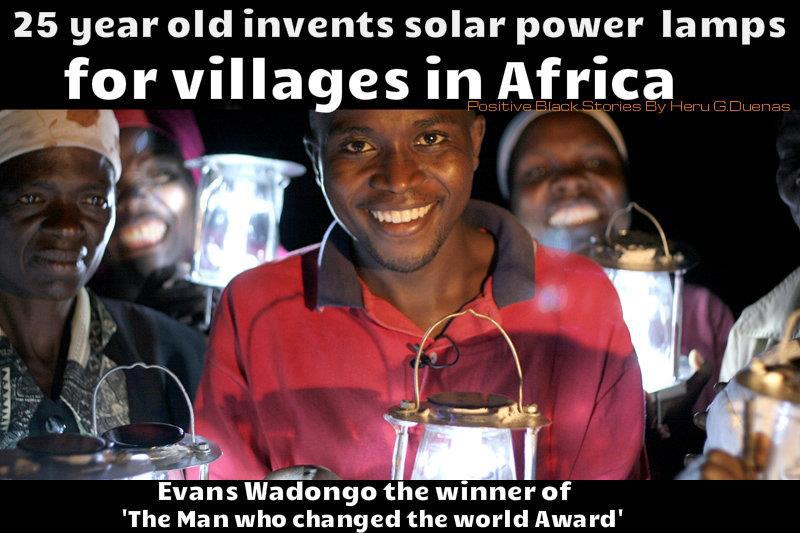
Please note that the following is NOT an exhaustive list, but one that I hope surprises you while filling you with pride… more inventors etc can be found in the Black History Studies, Inspiration for my Sisters & Brothers pages also… enjoy
We (My fellow Black people) have created and invented The…
- Air conditioning unit - Frederick M. Jones July 12, 1949
- Almanac - Benjamin Banneker Approx 1791
- Auto cut-off switch - Granville T. Woods January 1, 1839
- Auto fishing devise - G. Cook May 30, 1899
- Automatic gear shift - Richard Spikes February 28, 1932
- Baby buggy - W.H. Richardson June 18, 1899
- Bicycle frame - L.R. Johnson October 10, 1899
- Biscuit cutter – A.P. Ashbourne November 30, 1875
- Blood plasma bag - Charles Drew Approx. 1945
- Cellular Phone - Henry T. Sampson July 6, 1971
- Chamber commode - T. Elkins January 3, 1897
- Clock - Benjamin Banneker
- Clothes dryer - G. T. Sampson June 6, 1862
- Curtain rod - S. R. Scratton November 30, 1889
- Curtain rod support - William S. Grant August 4, 1896
- Door knob - O. Dorsey December 10, 1878
- Door stop - O. Dorsey December 10, 1878
- Dust pan - Lawrence P. Ray August 3, 1897
- Egg beater - Willie Johnson February 5, 1884
- Electric lamp bulb - Lewis Latimer March 21, 1882
- Elevator - Alexander Miles October 11, 1867
- Eye protector - P. Johnson November 2, 1880
- Fire escape ladder - J. W. Winters May 7, 1878
- Fire extinguisher - T. Marshall October 26, 1872
- Folding bed - L. C. Bailey July 18, 1899
- Folding chair - Brody & Surgwar June 11, 1889
- Fountain pen - W. B. Purvis January 7, 1890
- Furniture caster - O. A. Fisher 1878
- Gas mask - Garrett Morgan October 13, 1914
- Golf tee - T. Grant December 12, 1899
- Guitar - Robert F. Flemming, Jr. March 3, 1886
- Hair brush - Lydia O. Newman November 15, 18??
- Hand stamp - Walter B. Purvis February 27 1883
- Horse shoe - J. Ricks March 30, 1885
- Ice cream scooper - A. L. Cralle February 2, 1897
- Improv. sugar making - Norbet Rillieux December 10, 1846
- Insect-destroyer gun - A. C. Richard February 28, 1899
- Ironing board - Sarah Boone December 30, 1887
- Key chain - F. J. Loudin January 9, 1894
- Lantern - Michael C. Harvey August 19, 1884
- Lawn mower - L. A. Burr May 19, 1889
- Lawn sprinkler - J. W. Smith May 4, 1897
- Lemon squeezer - J. Thomas White December 8, 1893
- Lock - W. A. Martin July 23, 18??
- Lubricating cup - Ellijah McCoy November 15, 1895
- Lunch pail - James Robinson 1887
- Mail box - Paul L. Downing October 27, 1891
- Mop - Thomas W. Stewart June 11, 1893
- Motor - Frederick M. Jones June 27, 1939
- Peanut butter & Printer Ink - George Washington Carver 1896
- Pencil sharpener - J. L. Love November 23, 1897
- Phone transmitter - Granville T. Woods December 2, 1884
- Record player arm - Joseph Hunger Dickenson January 8, 1819
- Refrigerator - J. Standard June 14, 1891
- Riding saddles - W. D. Davis October 6, 1895
- Rolling pin - John W. Reed 1864
- Shampoo headrest - C. O. Bailiff October 11, 1898
- Spark plug - Edmond Berger February 2, 1839
- Stethoscope - Imhotep Ancient Egypt
- Stove - T. A. Carrington July 25, 1876
- Straightening comb - Madam C. J. Walker Approx 1905
- Street sweeper - Charles B. Brooks March 17, 1890
- Thermostat control - Frederick M. Jones February 23, 1960
- Traffic light - Garrett Morgan November 20, 1923
- Tricycle - M. A. Cherry May 6, 1886
- Typewriter - Burridge & Marshman April 7, 1885
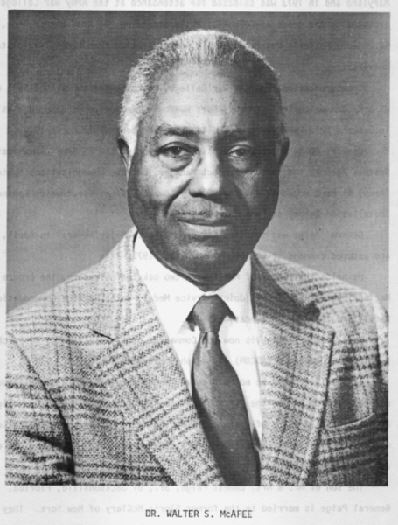
Walter S. McAfee is the African American mathematician and physicist who first calculated the speed of the moon.
Born: Sept.. 2, 1914; died Feb. 18, 1995
Birthplace: Ore City, Texas
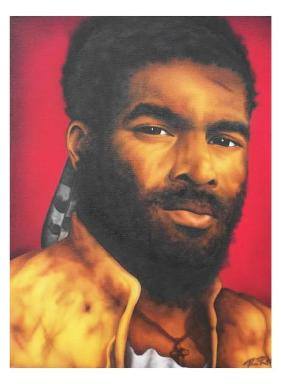
Estevanico (c. 1500–1539), born in Morocco, was the first known person born in Africa to have arrived in the present-day continental United States.
The Moriscos of Spain and Portugal were with the first European explorers and settlers of the Americas. Black explorers 'accompanied' Spanish and Portuguese explorers on their expeditions in North and South America.
The best known of the early Black explorers was Estevanico.
He is known by many different names, common are Esteban de Dorantes, Estebanico and Esteban the Moor.
Estevanco traveled for eight years with other three men across northern New Spain (present-day U.S. Southwest and northern Mexico), before they reached Mexico City in 1536, where they were welcomed by the Viceroy Antonio de Mendoza. In Mexico City he was given his freedom
Henrietta Lacks: The Only Known Human With Immortal Cells

Henrietta Lacks and husband, David Lacks.
Henrietta Lacks was a black mother and wife whose cancerous cells were taken without her knowledge while she was receiving treatment. Long after her death in 1951, her cells lived on being researched and contributing to medical advances, such as the development of the polio vaccine (1952), cell cloning (1953), and identification of a key receptor in HIV (1986). While Henrietta’s family remained poor and could not afford health insurance, her cells were commercialized and have generated millions of dollars.
She had a name and life

Deborah Lacks. One of Henrietta’s daughters.
Henrietta Lacks was actually born Loretta Pleasant on August 1, 1920 in Roanoke, Virginia. Her parents were Eliza and Johnny Pleasant. Lawrence and Sony Lacks, Henrietta’s sons, told Denise Watson of the Virginian Pilot that they “aren’t sure how she became Henrietta, which was shortened to Hennie after her mother’s death when the girl was 4.[1]”
After her mother’s passing, Henrietta and her siblings — ten children in total — were distributed among nearby relatives in Clover, Virginia. She ended up with her grandfather and her first cousin, David. Sadie, another cousin, recalls Henrietta in her early years:
Sadie remembers Hennie as the most beautiful thing, with honey-colored skin, a round face and a smile that made boys act like fools.
Sadie said she was surprised when Hennie and David, who went by “Day,” started acting like a couple; they’d been raised like brother and sister.
But Lawrence was born to them in 1935 and Elsie four years later.[1]
Two years after Elsie’s birth, Henrietta and David married and moved to Maryland. David became a shipyard worker while Henrietta stayed at home to care for the kids. There, the couple bore three more children – Sonny (1947), Deborah (1949), and their final son Joe (1950).
Henrietta discovers a lump on her cervix

Henrietta Lacks.
In early 1951, Henrietta discovered a lump on her cervix while bathing. She went into Johns Hopkins — the only hospital that would treat black people at the time — to see what was wrong.
Dr. Howard Jones was the gynecologist on duty Feb. 1, 1951, in the outpatient center at Johns Hopkins when Henrietta Lacks came in.
Jones … examined her and saw something so peculiar it would stay with him for decades: A glistening, smooth growth that resembled purple Jell-O.
It was about the size of a quarter at the lower right of her cervix, and it bled easily when touched.
Jones thought it might be an infection and tested Lacks for syphilis, but the results came back negative. He ordered a biopsy – cutting away a small portion of the tissue – and within 48 hours had the diagnosis: cancer.
When Lacks returned for treatment eight days later, a second doctor sliced off another sliver of her tumor. Following the practice of the day, Lacks was not told.[1]
Henrietta, who had not yet informed her family of the diagnosis, returned home and went about business as usual. She continued to go to Johns Hopkins for radium treatments, but there was no improvement in her health. Soon the cancer would grow out of control and take over her body.
It was becoming difficult for her to hide the pain. Cousins would enter the house and hear her upstairs, wailing, “Oh, Lord, oh, Lord, I can’t get no ease! Jesus, help me, Jesus!”
On Aug. 8, shortly after her 31st birthday, she was readmitted to Johns Hopkins for what would be the last time.
Just after midnight on Oct. 4, 1951, Henrietta Lacks died. Doctors performed an autopsy that revealed firm white lumps studding her body, her chest cavity, lungs, liver and kidney. Her bladder appeared to be one solid tumor.[1]
The family learns about Henrietta’s “immortal” cells
Almost twenty years after Henrietta’s death, David and the children received an unexpected call that would further impact their lives:
Researchers wanted Sonny and other family members to give blood samples so more could be learned about their mother’s genetic makeup. The family wanted to know why.
Part of their mother, they were told, was alive and growing more than 20 years after her death. [1]
But how?
Tissue from their mother’s second biopsy in 1951 had been given to Johns Hopkins researcher Dr. George Gey, who for years had been trying unsuccessfully to grow human cells outside the body in his search for a cancer cure.
Technicians expected Lacks’ cells to do what previous samples had done: nothing, or perhaps live a few days then die. Instead, the cells multiplied in petri dishes, spreading and piling atop one another. Uncontrollable.
On the day Lacks died, Gey appeared on a television program called “Cancer Can Be Conquered.” He held Lacks’ cells in a bottle close to the camera and discussed his scientific breakthrough: the first human cell line ever grown.[1]
The fact that Henrietta’s cells had been taken without her knowledge and used in research for two decades was complete news to the Lackses. A mixture of anger, disappointment, and shock set into the family, and understandingly so.
Companies used HeLa to test cosmetics. … Scientists sent HeLa into space with white mice to determine what happened to human flesh at zero gravity. HeLa helped scientists discover genetic mapping. … According to the U.S. Patent and Trademark Office, there were close to 11,000 patents involving HeLa [in 2010]. The cells were so prevalent that they could be ordered by the vial on the Internet.
… [But, the family was] angry at Johns Hopkins because they felt the hospital removed her cells without her permission. …. They were enraged by biomedical companies that produced the cells like they were printing money and sold them for millions, while many in the family couldn’t afford health insurance. [1]
Henrietta’s family finally has a say
Nearly sixty years after Henrietta’s passing, the Lacks’ family was finally given a voice. The 2013 publication of the HeLa cell line genome sequence and the controversy that ensued prompted this moment.
… [The Lackses] will have some control over scientists’ access to the cells’ DNA code. And they will receive acknowledgement in the scientific papers that result.
The agreement came after the family raised privacy concerns about making Henrietta Lacks’ genetic makeup public. Since DNA is inherited, information from her DNA could be used to make predictions about the disease risk and other traits of her modern-day descendants.
Under the agreement, two family members will sit on a six-member committee that will regulate access to the genetic code. [2]

Henrietta Lacks’ family.
The question of broad consent
Three years after this agreement, the use of Henrietta’s cells brought focus to proposed revisions to the Common Rule, a federal policy for the protection of human subjects. While there are mixed opinions about the effectiveness of new regulations, which would involve broad consent, there is still hope in some sort of balance between research and ethics in this regard:
Policy-makers face a daunting task: expedite development of new cures and treatments while staying vigilant against research abuses of human subjects. Addressing systemic inequity only adds to this challenge.
….
With real transparency and respect for equity, it’s possible the new Common Rule could align with the common good and make justice part of the Henrietta Lacks legacy. That would be a worthwhile transformation. [3]
Reforms to the Common Rule are anticipated by the end of 2016.
SOURCES:
[1] Denise Watson, “Cancer cells killed Henrietta Lacks – then made her immortal,” The Virginian Post, May 10, 2010.
[2] Malcolm Ritter, “Feds, family reach deal on use of DNA information,” The Seattle Times, August 7, 2013.
[3] Paul C. McLean, “Immortal Tension: Henrietta Lacks, And The Rift Between The New Common Rule And The Common Good,” Cognoscenti, January 20, 2016.
To read more about Henrietta Lacks:
Rebeccas Skloot, “The Immortal Life of Henrietta Lacks”.
Lawrence and Bobbette Lacks. “HeLa Family Stories: Lawrence and Bobbette.”
7 African female icons that shaped history
In his book ‘Society must be defended’, written in 1976, Michel Foucault speaks about historical revisionism, hinting to a an earlier statement made by Winston Churchill who said that “History is written by the victors”.
These discussions are still relevant today. A significant amount of historical narrative is still being written by those with the most power. If you walk into any of the world’s most powerful institutions (government, academic or corporate) you will identify that the group that are shaping history are Euro-American men. I’m not saying that this group is intentionally shaping history for the rest of us, or that other groups aren’t contributing in large measures to what future generations will consider history. Rather, I want to highlight that the power of writing one’s own history seems to be what history making is all about. Knowing the sources of stories that shape our lives, helps to combat the danger of the single story.
Africa is again a continent of international interest, which is good, but who is writing the current narrative about Africa, also that which is about ‘rebranding’ the continent? I think the source of the information that we consume, is even more important than the information itself.
On the other hand it’s worth knowing that magazines like FAB magazine, are African owned, managed and produced. As a regular contributor to FAB, I am pleased to be involved in a project that is by Africans for Africans. Another example of home-grown storytelling is Spielworks, a Kenyan media content producer.
Funmilayo Ransome-Kuti
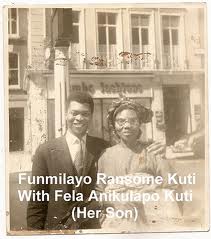
1. Funmilayo Ransome Kuti – The Woman Activist
Years before the second wave of feminism began to take form in the West, there was a woman making activist waves in Nigeria. She was a woman nationalist named Funmilayo Anikulapo-Kuti. Her feminism and democratic socialism lead to the creation of The Abeokuta women’s union (AWU) and later Women’s International Democratic Federation (WIDF), organisations and movements that aided Kuti to promote women’s rights to education, employment and to political participation. When king Alake Ademola of Egbaland wanted to impose taxes on women, Kuti and the AWU clan went to protest using the slogan ‘no taxation without representation’. They were not equal members of society and were strongly opposed to paying taxes until the injustices were rectified. As the women protested outside the Alake’s house, they sang in Yoruba:
“Alake, for a long time you have used your penis as a mark of authority that you
are our husband.
Today we shall reverse the order and use our vagina to play the role of husband.”
Their unified actions resulted remarkably in the king’s abdication.
Yaa Asantewa
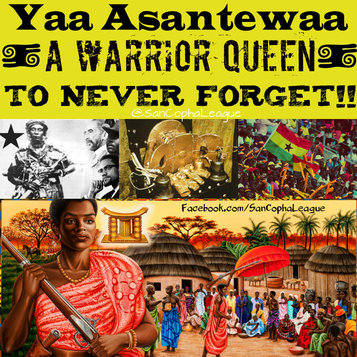
2. Yaa Asantewa – The Commander in Chief
No woman is known in the history of the African reactions and responses to European power better than Nana Yaa Asantewa of the Asante state Edweso in Ghana. She was the military leader of what is known as the ‘Yaa Asantewa War’, which was the last war between the Asante and the British, and during which she became referred to by the British as the ‘Joan D’Arc of Africa’. Although she did not enter combat herself, the troops fought in her name and she gave orders and provided the troops with gun powder.
Winnie Mandela
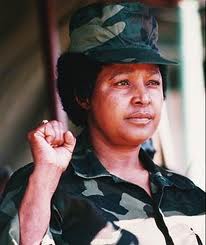
3. Winnie Mandela – The President’s Wife
Twenty years of separation proved too much even for the Mandelas. The young woman Nelson Mandela knew when he was incarcerated was not the middle-aged woman to whom he returned. And she, now accustomed to the company of young male rebels became uncomfortable in the presence of the old Nelson. When the couple embarked on an international journey after Nelson’s release, crowds flocked to see him, the person they considered the hero of South African anti-apartheid politics. What this crowd was likely not to know was Winnie’s activist work, her leadership and her outspoken opposition to white minority rule played an equal role in the anti-apartheid campaign . There’s a clip here that is historically significant.
Margaret Ekpo
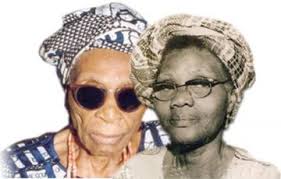
4. Margaret Ekpo – The Fashionable Feminist
Margaret Ekpo was famous for being a fashionable woman who combined western and Nigerian fashion influences. Perhaps her background as a seamstress enabled her to even better express her ‘Afropolitan’ lifestyle via her clothing. She loved ballroom dancing and was a devout Christian, but when it came to her political activism, which really is what she was about, she made sure to uphold an image of Africaness, wearing traditional clothes and plaiting hair during political campaigns.
A few women can lay claim to as many legacies for their countrymen as Maragaret Ekpo. At the time of her death she left behind a legacy of ‘One Nigeria’, ‘Women in Politics’, ‘Women in Business and Leadership’ and ‘Emancipation for Women’.
Miriam Makeba
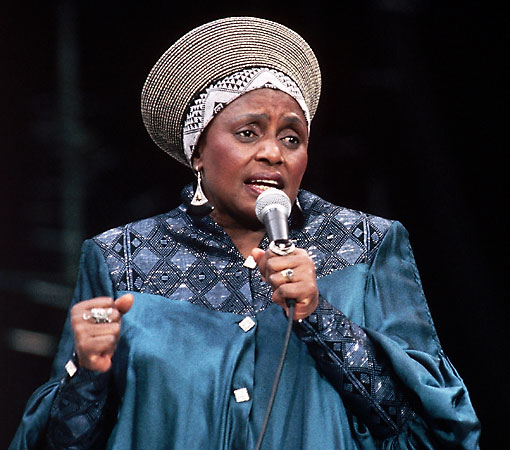
5. Miriam Makeba – The Mother of Africa
Another prominently outspoken and visible opponent of South Africa’s apartheid regime was Miriam Makeba, also known as Mama Africa, and the Empress of African song. Makeba was not only involved in radical activity against apartheid but also in the civil rights movement and then black power. In fact, she was married (albeit briefly) to the Black Panther leader Stokely Carmichael, who was her fourth husband out of five. She said:
Everybody now admits that apartheid was wrong, and all I did was tell the people who wanted to know where I come from how we lived in South Africa. I just told the world the truth. And if my truth then becomes political, I can’t do anything about that.
Queen Nzinga sculpture
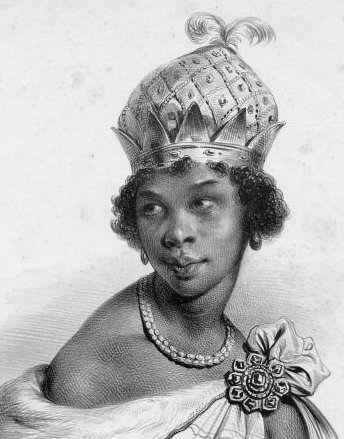
6. Queen Nzinga – The reformist
Also knows as Queen Jinga, she is known to have assigned women to important government offices in present day Angola. Two of her war leaders were reputedly her sisters, her council of advisors contained many women, among others her sisters, Princess Grace Kifunji and Mukumbu, the later Queen Barbara, and women were called to serve in her army. Nzinga organized a powerful guerrilla army, conquered some of her enemies and developed alliances to control the slave routes. She even allied with the Dutch to help her stop the Portuguese advancement. After a series of decisive setbacks, Nzinga had to negotiate a peace treaty with the Portuguese, but still refused to pay tribute to the Portuguese king.
Lady Ruth Khama
7. Ruth Williams, Lady Khama – The Motswanan
Lady Khama was the wife of Botswana’s first president, Sir Seretse Khama. She was born in Blackheath in south-east London and was the daughter of a retired Indian Army officer. Her marriage to the man who would become Botswana’s president was met with disapproval in Botswana, it enraged apartheid South Africa, and embarrassed the British government. Lady Khama was an influential, politically active first lady during her husband’s tenure as president. When Seretse Khama died in 1980, many expected that Ruth Khama would return to London. But instead she became president of the country’s Red Cross. She said:
“I am completely happy here and have no desire to go anywhere else, I have lived here for more than half my life, and my children are here. When I came to this country I became a Motswana.”
7 African male icons that shaped history
Albert John Luthuli
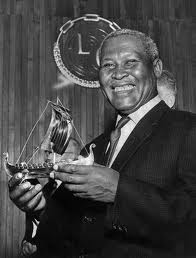
1. Albert John Luthuli – The First Nobel Laureate
At the Nobel Award ceremony in 1960, where Luthuli was the first African to be awarded a Nobel prize (for peace), Luthuli resolutely read from his acceptance speech:
“…I accept it also as an honour not only to South Africa, but for the whole continent of Africa. Quite long ago my forefathers extended a hand of friendship to people of Europe when they came to that continent. What has happened to the extension of that hand only history can say, and it is not time to speak about that here, but I would like to say, as I receive this prize of peace, that the hand of Africa was extended. It was a hand of friendship, if you read history…”
Seven years later, whilst out walking near his home, Luthuli was hit by a train and died. The official cause that he was crossing the line at the time was an explanation dismissed by many of his followers who believed more sinister forces were at work.
Leopold Senghor
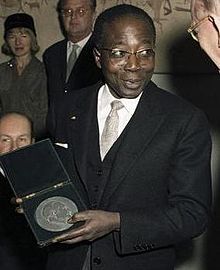
2. Leopold Senghor – The Poetic President
It is quite impossible to separate the politics of Leopold Senghor from the poetry of Leopold Senghor.
Had he not been involved in politics, his poetry might have lacked the dimension of influential experience. Had he not been a poet, the politician in him might have lost his sense of direction and become crippled by everyday pressure.
Even though his love affair with Africa was ignited as a young poet and writer in Paris, it was his political consciousness, which led to the concept of Negritude, a movement created by Senghor and defined by African socialism and intellectual identity, and seen as Africa’s contribution to the coming universal civilization.
Both as a poet and as a president, Senghor was an African man with a single purpose: to create a new world, a new philosophy, a new literature, and ultimately, a new society. This was a task worthy of a great heart.
Osei Tutu
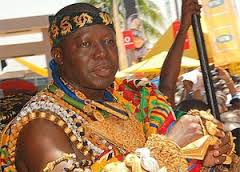
3. Osei Tutu – The First Asante Warrior
The founder and first ruler of the Asante empire in present-day Ghana, Osei Tutu was the most noted ruler of the Asante. In about 1685 Osei Tutu succeeded his uncle as ruler of Kumasi, and through wars of expansion he brought several Asante territories together against common enemies. This military union provided the framework of Asante unity. Osei Tutu made Kumasi the capital of a growing Asante kingdom.
His legacies still endures today. For example he founded the Golden Stool, the supreme shrine of the Asante people and a symbol of their spiritual and political identity. He also founded Odwira, an annual festival. Osei Tutu also established a set of laws that the Asante regard as the basis of their nation.
There is a luxury label named after him.
Thomas Sankara
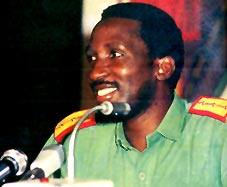
4. Thomas Sankara – The Radical Revolutionary
Thomas Sankara seized power in 1983 in a Pan-African coup in what was Upper Volta. He changed the name of the country to Burkina Faso meaning ‘land of honest men’. Sankara’s vision was to create economic and political change which would work in the interest of Burkina Faso’s people rather than Western interests and before his assassination he implemented notable reforms in agriculture, education and women’s issues, for example he banned FGM (female genital mutilation). He said:
‘There is no true social revolution without the liberation of women”
When asked why he had let it be known that he did not want his portrait hung in public places, Sankara said ‘There are seven million Thomas Sankaras’.
Patrice Lumumba
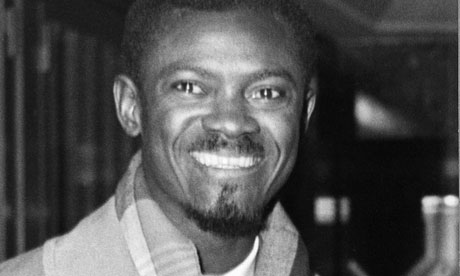
5. Patrice Lumumba – The Legendary Martyr
If there’s truth to the belief that the ultimate test of charismatic leadership is a certain capacity to create legend, then Lumumba deserves his place in history as the African icon who left behind him the most inspiring legacy of past African leaders.
Whether as a martyr symbol of Pan Africanism, a prophet of African nationalism, or as the champion of left-wing intellectuals, Lumumba serves as a larger-than-life character around whom people can weave their hopes of a proud and visionary African leader.
Critics say Lumumba failed to implement many positive results during his term in office. They believe that he was a more effective Africa nationalist in death than he was in life.
Despite this, his legacy as the Messiah of radical African nationalism is indisputable, he was a leader who sacrificed his own life for the independence of his country.
Statue of Behanzin in Benin
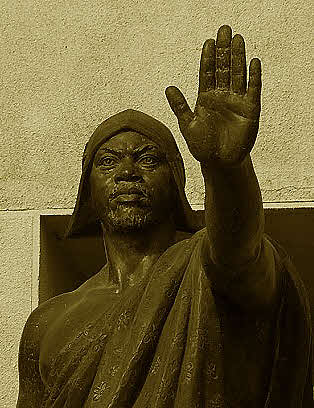
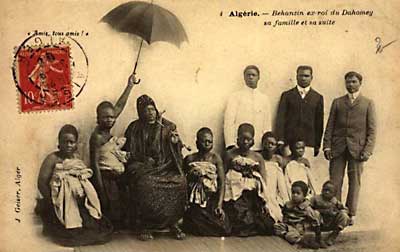
6. Behanzin – The Fearless King
Behanzin was Dahomey’s last independent ruler before colonialism and ruled from 1889 to 1894. He strongly resisted European intervention into his country and it is believed that his army included a division of thousands of female warriors.
When the French envoys arrived at his palace with presents, it is reported he brushed the presents aside, saying contemptuously, “We have cases full of that in Dahomey.” When told of the workings of the system of government in France, it is said that he took his pipe from his mouth and laughed loud and long, saying that he much preferred his own, which was quicker and more original. “Dahomey, has never ceded Cotonou to France, and if the French do not get out at once, I will drive them out myself.” War began. In the first few engagements Behanzin was victorious. France, realizing they had a difficult enemy to cope with, selected their best colonial fighter, Colonel A. A. Dodds, a Senegalese/French, and sent him against Behanzin. Behanzin defeated Dodds although later during the same war the latter claimed the ultimate victory thanks to heavier artillery.
This picture of Behanzin and his two wives is fascinating!
Fela Kuti
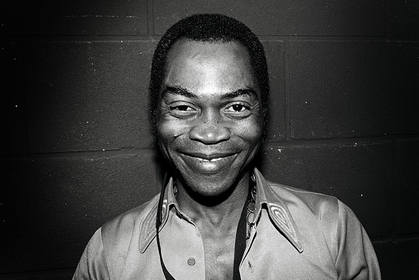
7. Fela – The Multi Instrumentalist
Outlaw musician, spiritualist, polygamist and activist Fela Kuti’s legacy is one that breathes throughout Africa.
Philip Sweeney discusses in his obituary to Fela that the artists pronouncements in the 80s became ‘colourful’. He writes about one of his theories on mystical studies:
“A much-aired recent theory, characteristically unsupported by anything as mundane as evidence, concerned the presence in Windsor Castle of a Yoruba ritual pot purloined by the explorer Mungo Park, the vibrations from which were fomenting global misfortunes.”
In this radio interview from 1986, Fela doesn’t seem fully able to exhibit the great intelligence, clarity and wit that most of us admire him for. The last years of Fela’s life might remain a slight mystery to his fans, but the music and message he delivered at the height of his activism eludes the understanding of no-one who listens.
(update: in 1986 when the interview was conducted, Fela had just been released from prison and seemed in many ways a changed man. Having seen/heard more of that Fela and researched/written more about him, I believe those changes made him an even more enigmatic and honest leader than he was before even if he comes across as less sassy.)
The following list details inventors born in the continent of Africa
| Inventors | Inventions / Projects |
| Touchpad for Medical Use | |
| Touchpad (Tablet), Smartphone | |
| Touchpad (Tablet), Smartphone | |
| Touchpad (Tablet) | |
| HIV-2 Virus | |
| Anti-Malaria Soap | |
| Blood Auto-transfusion | |
| Pathogen Detection System | |
| Cancer Treatment | |
| Dry Bath Gel | |
| Surgery Robot | |
| Humanoid Robot | |
| 3D Printer | |
| Gasoline Miniature Car | |
| Miniature Electric Train Head | |
| Polyvalent Wireless Communication System | |
| Telecommunications Network Simulator | |
| Universal Business Software | |
| Anti-collision System | |
| Electronic Fingerprint System | |
| Gravity Control | |
| Space Rockets | |
| Ballistic Rockets | |
| Helicopter | |
| Helicopter, Boat… | |
| Flapping Wing Aircraft | |
| Armored Vehicle | |
| Automobiles... | |
| Electric Car | |
| Automobile | |
| Hybrid Car (hydrogen) | |
| Bio-diesel Production Unit | |
| Renewable Oil | |
| Insecticide | |
| Multipurpose Mobile | |
| Car Controlled by a Mobile Phone | |
| Automobile Anti-theft | |
| Automobile Anti-theft, Eating machine... | |
| Gourd Seeds Husking Machine | |
| Fonio Husking Machine | |
| Drought Resistant Sorghum | |
| Seeders and Railway Safety System | |
| Solar Oven | |
| Lawn Mower, Solar Oven… | |
| Egg Incubators | |
| Egg Incubators | |
| Mini-Hydroelectric Dam | |
| Mini-Hydroelectric Dam | |
| Power Barge | |
| TV set Lightning Protector | |
| Energy Accumulator | |
| Electronic Outlet Protector | |
| Pluvial-Electric Power Plant | |
| Tidal Turbine, Solar Dryer... | |
| Electric Windmill | |
| Solar Powered Traffic Lights | |
| Solar Lamp | |
| Solar Lamp | |
| Pads (papyrus), Incinerator... | |
| Plastic Recycling | |
| Writing System | |
| Writing System |
![IMG_6374[1] IMG_6374[1]](https://sites.create-cdn.net/siteimages/23/6/2/236224/6385276.jpg)
10 Top African-Born Film Directors
Click Here For Info - Thank you (external site)
NARM (Naming And Role Model) Highlighting African British Male Role Models 1907-2007
Click the lin k below for the NARM e-book
http://bit.ly/1khquJk (external site)
© 2014 Majority NOT Minority Ltd - All rights reserved.
No republication of this material, in any form or medium, is permitted without express permission of the author